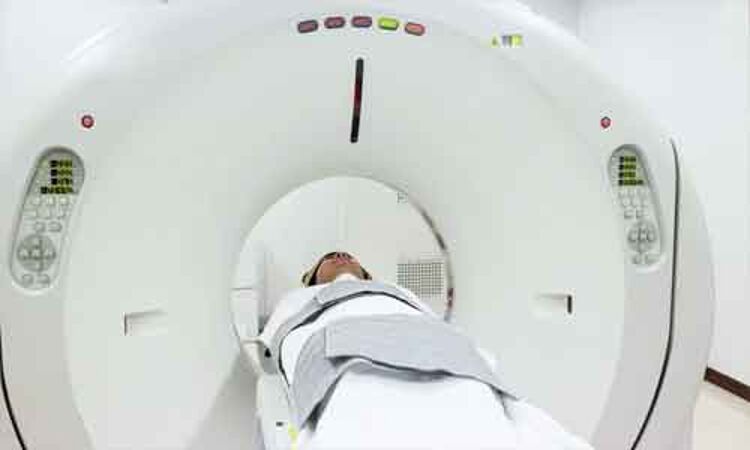- Home
- Medical news & Guidelines
- Anesthesiology
- Cardiology and CTVS
- Critical Care
- Dentistry
- Dermatology
- Diabetes and Endocrinology
- ENT
- Gastroenterology
- Medicine
- Nephrology
- Neurology
- Obstretics-Gynaecology
- Oncology
- Ophthalmology
- Orthopaedics
- Pediatrics-Neonatology
- Psychiatry
- Pulmonology
- Radiology
- Surgery
- Urology
- Laboratory Medicine
- Diet
- Nursing
- Paramedical
- Physiotherapy
- Health news
- Fact Check
- Bone Health Fact Check
- Brain Health Fact Check
- Cancer Related Fact Check
- Child Care Fact Check
- Dental and oral health fact check
- Diabetes and metabolic health fact check
- Diet and Nutrition Fact Check
- Eye and ENT Care Fact Check
- Fitness fact check
- Gut health fact check
- Heart health fact check
- Kidney health fact check
- Medical education fact check
- Men's health fact check
- Respiratory fact check
- Skin and hair care fact check
- Vaccine and Immunization fact check
- Women's health fact check
- AYUSH
- State News
- Andaman and Nicobar Islands
- Andhra Pradesh
- Arunachal Pradesh
- Assam
- Bihar
- Chandigarh
- Chattisgarh
- Dadra and Nagar Haveli
- Daman and Diu
- Delhi
- Goa
- Gujarat
- Haryana
- Himachal Pradesh
- Jammu & Kashmir
- Jharkhand
- Karnataka
- Kerala
- Ladakh
- Lakshadweep
- Madhya Pradesh
- Maharashtra
- Manipur
- Meghalaya
- Mizoram
- Nagaland
- Odisha
- Puducherry
- Punjab
- Rajasthan
- Sikkim
- Tamil Nadu
- Telangana
- Tripura
- Uttar Pradesh
- Uttrakhand
- West Bengal
- Medical Education
- Industry
Perceived risk of iodinated contrast media in reduced kidney function overstated

Intravenous iodinated contrast media are commonly used with computed tomography (CT) for diagnosing disease and to evaluate treatment response. In some patients with reduced kidney function use of iodinated contrast media is delayed due to the perceived risks of contrast-induced acute kidney injury.
The American College of Radiology (ACR) and the National Kidney Foundation (NKF) have issued new consensus statements according to which the risk of administering modern intravenous iodinated contrast media in patients with reduced kidney function has been overstated. The new consensus statement has been published in the journal Radiology.
"The historical fears of kidney injury from contrast-enhanced CT have led to unmeasured harms related to diagnostic error and diagnostic delay," said lead author Matthew S. Davenport, M.D., associate professor of radiology and urology at the University of Michigan in Ann Arbor, Michigan. "Modern data clarify that this perceived risk has been overstated. Our intent is to provide multi-disciplinary guidance regarding the true risk to patients and how to apply a consideration of that risk to modern clinical practice."
These consensus statements were developed to improve and standardize the care of patients with impaired kidney function who may need to undergo exams that require intravenous iodinated contrast media to provide the clearest images and allow for the most informed diagnosis.
In clinical practice, many factors are used to determine whether intravenous contrast media should be administered. These include the probability of an accurate diagnosis, alternative methods of diagnosis, risks of misdiagnosis, expectations about kidney function recovery, and risk of an allergic reaction. Decisions are rarely based on a single consideration, such as the risk of an adverse event specifically related to kidney impairment. Consequently, the authors advise that these statements be considered in the context of the entire clinical scenario.
Importantly, the report outlines the key differences between contrast-induced acute kidney injury (CI-AKI) and contrast-associated acute kidney injury (CA-AKI). In CI-AKI, a causal relationship exists between contrast media and kidney injury, whereas in CA-AKI, a direct causal relationship has not been demonstrated. The authors suggest that studies that have not properly distinguished the two have contributed to the overstatement of risk.
"A primary explanation for the exaggerated perceived nephrotoxic risk of contrast-enhanced CT is the nomenclature," Dr. Davenport said. "'Contrast-induced' acute kidney injury implies a causal relationship. However, in many circumstances, the diagnosis of CI-AKI in clinical care and in research is made in a way that prevents causal attribution. Disentangling contrast-induced AKI (causal AKI) from contrast-associated AKI (correlated AKI) is a critical step forward in improving understanding of the true risk to patients."
The statements answer key questions and provide recommendations for the use of intravenous contrast media in treating patients with varying degrees of impaired kidney function.
Although the true risk of CI-AKI remains unknown, the authors recommend intravenous normal saline for patients without contraindication, such as heart failure, who have acute kidney injury or an estimated glomerular filtration rate (eGFR) less than 30 mL/min per 1.73 m2 who are not undergoing maintenance dialysis. In individual and unusual high-risk circumstances (patients with multiple comorbid risk factors), prophylaxis may be considered in patients with an eGFR of 30-44 mL/min per 1.73 m2 at the discretion of the ordering clinician.
The presence of a solitary kidney should not independently influence decision making regarding the risk of CI-AKI. Lowering of contrast media dose below a known diagnostic threshold should be avoided due to the risk of lowering diagnostic accuracy. Also, when feasible, medications that are toxic to the kidneys should be withheld by the referring clinician in patients at high risk. However, renal replacement therapy should not be initiated or altered solely based on contrast media administration.
The authors emphasize that prospective controlled data are needed in adult and pediatric populations to clarify the risk of CI-AKI.
For more details click on the link: https://doi.org/10.1148/radiol.2019192094
Dr Kamal Kant Kohli-MBBS, DTCD- a chest specialist with more than 30 years of practice and a flair for writing clinical articles, Dr Kamal Kant Kohli joined Medical Dialogues as a Chief Editor of Medical News. Besides writing articles, as an editor, he proofreads and verifies all the medical content published on Medical Dialogues including those coming from journals, studies,medical conferences,guidelines etc. Email: drkohli@medicaldialogues.in. Contact no. 011-43720751


